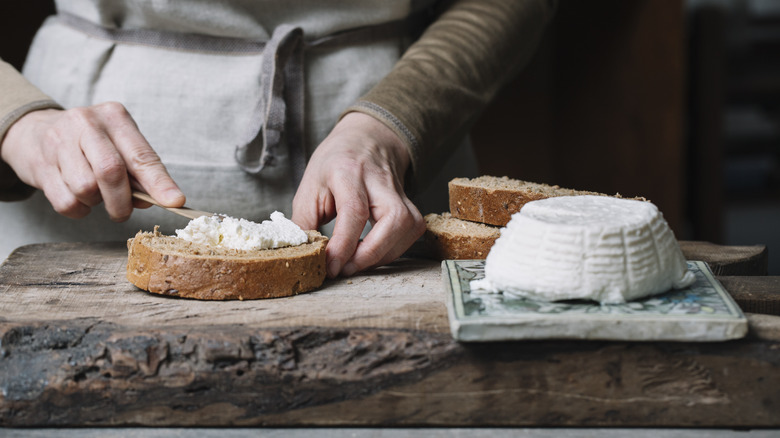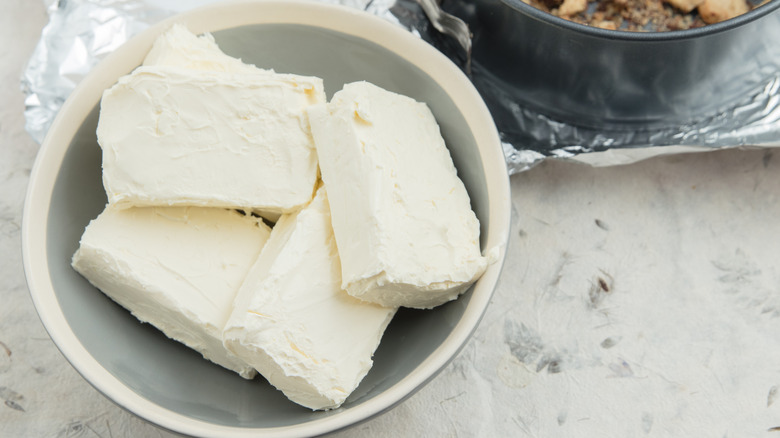What You Need To Know Before Softening Cream Cheese On Your Counter
When you're cooking with cream cheese, you almost always need to soften it. Otherwise, it's near impossible to use it while it's still cold, since it's like a really thick putty that you can't mix evenly into anything. Just like any other ingredient, however, you do need to take food safety into consideration when letting it sit at room temperature on your countertop. Since it's a semi-soft cheese product, you really don't want the cream cheese sitting out for more than two hours, since you run the risk of bacterial growth that could potentially get you or your guests sick.
The same goes for any cream cheese recipe, like dips or cheese balls. Those types of dishes can't stay out in environments at over 40 degrees Fahrenheit for over two hours, so if you've been entertaining with any of them, you'll need to put them away if they've been out on a table for an extended period of time. Fortunately, softening cream cheese doesn't always have to be done at room temperature — there's an easy and quick way to do it that'll ensure you can use it within minutes. That means there's no need to wait around while the cream cheese hangs around in a potential bacterial danger zone.
Microwaving is the fastest way to soften cream cheese
If you want a shortcut to soften your cream cheese, the microwave is your best bet. We've previously discussed how to do this, but all it takes is removing it from its wrapper (or tub), putting it in a microwave-safe container, and zapping it on high for 15 seconds. If it's not softened right away, you can try microwaving it for an additional 10 seconds or so to soften it further, but just remember you're not looking to melt it. You really just want it in a malleable form, because if your cream cheese isn't softened, it'll stay lumpy in batters or frosting no matter how much you try mixing it, which negates its normally appealingly smooth texture.
Otherwise, if you're not particularly in a rush, you can leave it out on the counter for an hour, unopened, with the express intention of cooking or baking with it immediately. Then once you're finished working with it, you'll still want to continue with the food safety rules mentioned earlier — don't let the cream cheese sit out continuously at room temperature for over two hours. Otherwise you're just inviting bacteria over for a party, and those are definitely what you'd consider uninvited guests.

